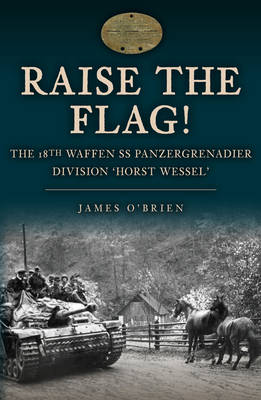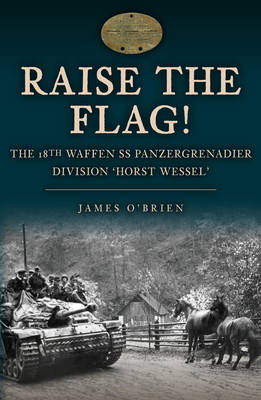
- Afhalen na 1 uur in een winkel met voorraad
- Gratis thuislevering in België vanaf € 30
- Ruim aanbod met 7 miljoen producten
- Afhalen na 1 uur in een winkel met voorraad
- Gratis thuislevering in België vanaf € 30
- Ruim aanbod met 7 miljoen producten
Raise the Flag!
The 18th Waffen SS Panzergrenadier Division 'Horst Wessel'
James O'BrienOmschrijving
The Division was created as part of the 1944 expansion of the Waffen SS and was rooted in Hitler's policy of divide and rule that he implemented even among his closest confidants. It was Hitler himself who made the decision that the division should be manned using volunteers from the Sturm Abteilung (SA) and bearing the name of the SA 'martyr' Horst Wessel, knowing that this would be anathema to Heinrich Himmler, head of the SS. Virtually no volunteers were forthcoming, which resulted in the division being fleshed out using ethnic Germans from the Hungarian/Yugoslav border regions, built around the 1st SS Motorised Infantry Brigade, a notorious 'Anti-Partisan' unit.
The history of the Division offers a new perspective on the war in the East precisely because the unit was not feted, was not famous. Its equipment and training were inadequate. The assault guns earmarked for the Panzer Battalion were re-allocated to the 12th SS Panzer Division 'Hitler Jugend' and the Panzerjäger Battalion was trained using 'Hetzer' tank destroyers but was issued with unfamiliar Stug III assault guns on the eve of battle. For most of the war the Division conducted a fighting retreat until final capitulation in Czechoslovakia. Through meticulous research in primary sources, James O'Brien adds significant new insights into the war on the Eastern Front.
Specificaties
Betrokkenen
- Auteur(s):
- Uitgeverij:
Inhoud
- Aantal bladzijden:
- 256
- Taal:
- Engels
Eigenschappen
- Productcode (EAN):
- 9781398113039
- Verschijningsdatum:
- 14/10/2025
- Uitvoering:
- Hardcover
- Formaat:
- Genaaid
- Afmetingen:
- 156 mm x 238 mm
- Gewicht:
- 612 g

Alleen bij Standaard Boekhandel
Beoordelingen
We publiceren alleen reviews die voldoen aan de voorwaarden voor reviews. Bekijk onze voorwaarden voor reviews.








